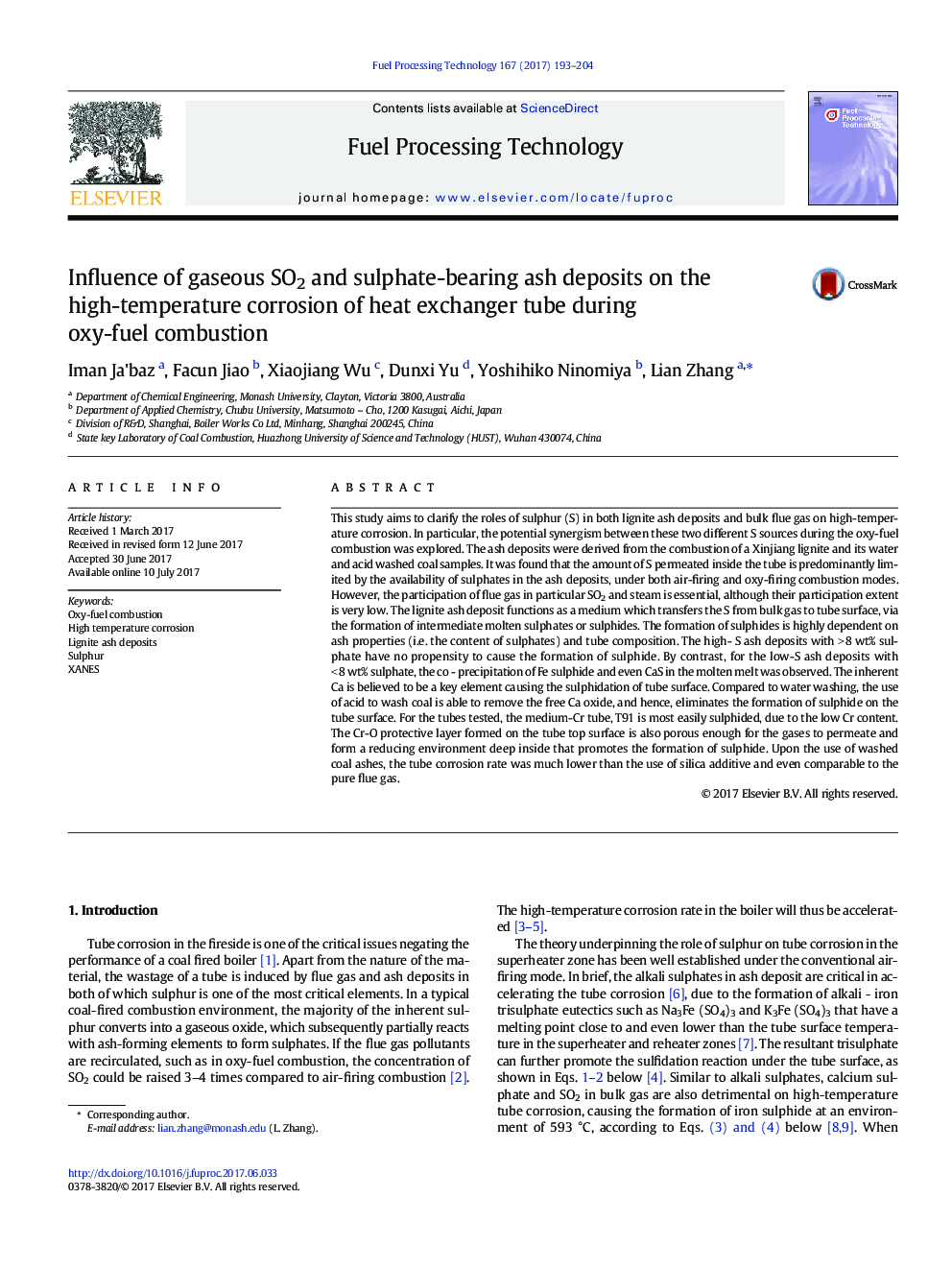| کد مقاله | کد نشریه | سال انتشار | مقاله انگلیسی | نسخه تمام متن |
|---|---|---|---|---|
| 6476249 | 1425379 | 2017 | 12 صفحه PDF | دانلود رایگان |

- Sulphate in ash deposit is the major source for S corrosion.
- Sulphidation of tube depends on sulphate content in ash and tube property.
- Medium-Cr tube T91 is highly prone to sulfidation.
- Participation of flue gas is essential for tube corrosion.
- Water-washing and acid-washing are beneficial in mitigating tube corrosion.
This study aims to clarify the roles of sulphur (S) in both lignite ash deposits and bulk flue gas on high-temperature corrosion. In particular, the potential synergism between these two different S sources during the oxy-fuel combustion was explored. The ash deposits were derived from the combustion of a Xinjiang lignite and its water and acid washed coal samples. It was found that the amount of S permeated inside the tube is predominantly limited by the availability of sulphates in the ash deposits, under both air-firing and oxy-firing combustion modes. However, the participation of flue gas in particular SO2 and steam is essential, although their participation extent is very low. The lignite ash deposit functions as a medium which transfers the S from bulk gas to tube surface, via the formation of intermediate molten sulphates or sulphides. The formation of sulphides is highly dependent on ash properties (i.e. the content of sulphates) and tube composition. The high- S ash deposits with >Â 8Â wt% sulphate have no propensity to cause the formation of sulphide. By contrast, for the low-S ash deposits with <Â 8Â wt% sulphate, the co - precipitation of Fe sulphide and even CaS in the molten melt was observed. The inherent Ca is believed to be a key element causing the sulphidation of tube surface. Compared to water washing, the use of acid to wash coal is able to remove the free Ca oxide, and hence, eliminates the formation of sulphide on the tube surface. For the tubes tested, the medium-Cr tube, T91 is most easily sulphided, due to the low Cr content. The Cr-O protective layer formed on the tube top surface is also porous enough for the gases to permeate and form a reducing environment deep inside that promotes the formation of sulphide. Upon the use of washed coal ashes, the tube corrosion rate was much lower than the use of silica additive and even comparable to the pure flue gas.
Graphic abstract122
Journal: Fuel Processing Technology - Volume 167, 1 December 2017, Pages 193-204